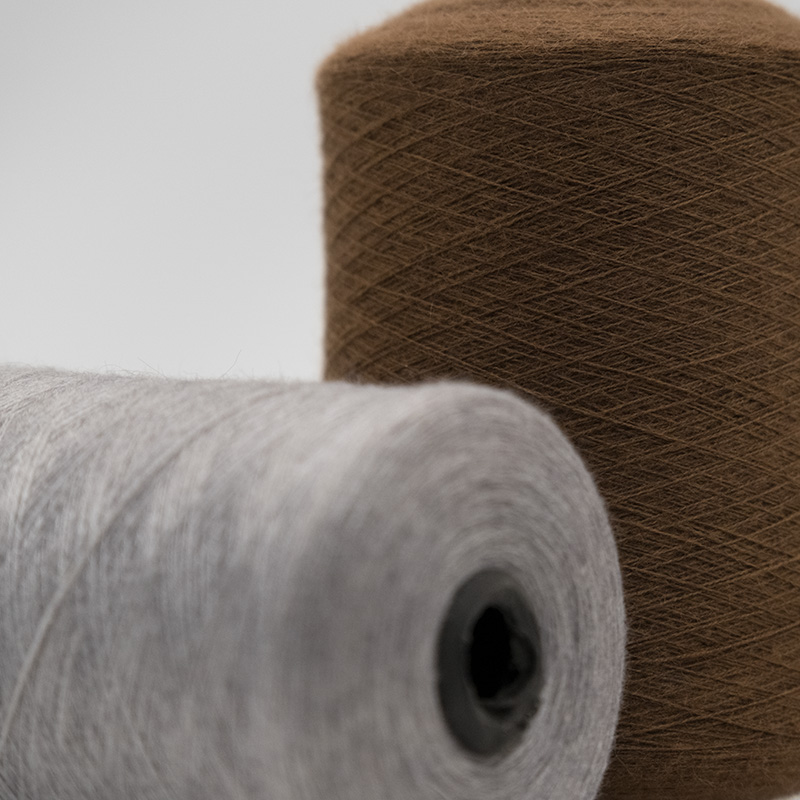Achieving the Perfect Blend: The Ideal Tencel-Silver Ratio
2024-10-14
Tencel silver wire represents a fascinating innovation in textile technology, combining the luxurious, eco-friendly properties of Tencel with the high-performance characteristics of silver fibers. This blend opens up exciting possibilities for creating fabrics that are not only visually stunning and comfortable to the touch but also offer practical advantages like anti-bacterial protection and anti-static behavior. However, the key to maximizing both aesthetic and functional properties lies in finding the ideal balance between these two fibers. So, what is the perfect ratio of Tencel to silver fibers in this yarn? The answer involves careful consideration of multiple factors, from yarn performance to production constraints and end-use applications.
In general, the ideal blend for Tencel silver wire tends to range between 85-90% Tencel and 10-15% silver fibers. This ratio strikes an excellent balance, maintaining the luxurious luster and softness that Tencel is known for while ensuring that the silver fibers provide sufficient anti-bacterial and anti-static properties. When the silver content falls within this range, the fabric retains its silk-like sheen and drape, ensuring it remains attractive and comfortable for high-end applications like fashion and home furnishings. Too much silver, on the other hand, could compromise the fabric’s softness and lightweight feel, making it less desirable for these markets. Moreover, higher percentages of silver fibers can lead to increased costs, as silver is an expensive component, potentially pushing the final product into a price range that limits its appeal.
From a practical standpoint, maintaining this 85-90% Tencel ratio ensures that the textile continues to benefit from Tencel’s well-known qualities such as moisture management, breathability, and environmental sustainability. Tencel, being derived from sustainable wood pulp, excels at wicking moisture away from the skin, helping to keep the fabric dry and cool. This is particularly important in high-contact or activewear applications where comfort is a top priority. The Tencel fibers' breathability is also critical in maintaining freshness, especially when paired with silver’s natural anti-bacterial action. Silver inhibits the growth of bacteria, helping the fabric resist odors, making it ideal for garments that need to maintain hygiene over extended wear.

When it comes to functional benefits, 10-15% silver fibers in the blend typically provides enough anti-bacterial and anti-static performance without overwhelming the textile. Silver, incorporated into the yarn as silver powder or nanoparticles, disperses evenly through the fiber, allowing it to effectively kill or suppress bacteria on contact. The anti-static properties of silver are equally beneficial, especially in environments where fabrics prone to static electricity can become uncomfortable or dangerous, such as in hospitals or cleanroom settings. A 10-15% concentration of silver achieves the desired anti-static effect while maintaining the yarn's flexibility and softness. Any lower, and the fabric might not deliver these performance benefits at a noticeable level, while going higher could disrupt the yarn's aesthetic appeal and natural drape.
Another consideration is the dyeing process. Silver fibers can sometimes affect how well the yarn absorbs and retains color. Fortunately, at a 10-15% inclusion rate, the silver does not interfere significantly with the dyeing process. Tencel is naturally receptive to dyes, ensuring vibrant, long-lasting colors. The result is a fabric that not only looks visually appealing but also meets high standards of functionality. At this optimal blend, manufacturers can produce textiles with consistent coloration and performance, ideal for a wide range of applications—from luxury apparel to advanced bedding materials.
For industrial scalability, this blend is practical to produce. Maintaining the majority of Tencel at around 85-90% ensures the spinning and blending processes remain cost-effective, as Tencel fibers are widely available and easier to work with than higher concentrations of silver. The silver component, although adding some complexity, is manageable at these levels, allowing for reliable production without significantly driving up manufacturing costs. It also allows for greater flexibility in designing products for different price points, making the fabric accessible to a broader market.
The optimal Tencel-to-silver ratio in Tencel silver wire—85-90% Tencel and 10-15% silver fibers—ensures the fabric delivers on both aesthetic appeal and functional benefits. This blend provides the silky softness and eco-friendliness of Tencel while harnessing the anti-bacterial and anti-static power of silver fibers. It’s a combination that not only elevates the textile’s performance but also maintains the luxurious, high-grade feel required for top-tier fashion and home textiles. Whether you’re designing elegant garments, breathable activewear, or advanced home textiles, this balanced blend offers the best of both worlds.



 English
English русский
русский Español
Español 中文简体
中文简体

















